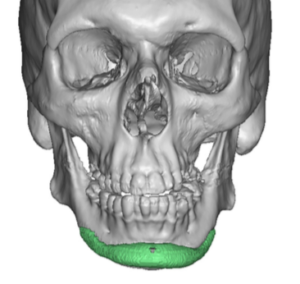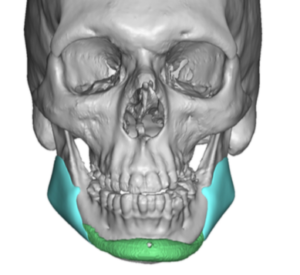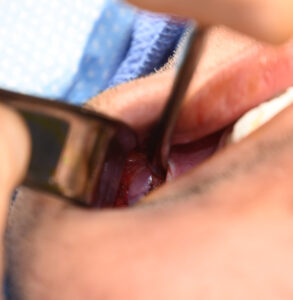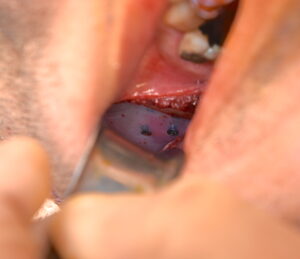Background: Chin implants are the most common type of surgical facial augmentation. They can be performed as a solitary procedure but are equally done as part of other aesthetic facial changes as well. In mild cases of microgenia (small chin) augmentation of the front end of the lower jaw produces a completely satisfying result.
But in patients with more significant chin deficiencies a successful chin augmentation can magnify the deficiency of the jawline behind it. If high jaw angles exist an improved chin projection can make it more apparent as the underlying problem is really an entire lower jaw growth deficiency and not just that of the chin. It is a good example how correction of just one part of an aesthetic problem, even if successful, can still feel inadequate or out of place.
In creating a more complete jawline effect after a prior chin implant the only option is jaw angle augmentation. The question then becomes will standard jaw angle implants work or is a custom implant approach needed. This depends on several factors including the natural symmetry/asymmetry of the bony jaw angles, the type of dimensional jaw angle augmentation needed, the location/symmetry of the back ends or tails of the existing chin implant and the importance of having a smooth connection along the jawline between the chin and the jaw angles. Jaw angle asymmetry and the desire for an assured linear jawline look are the most compelling factors for a custom jaw angle implant approach.
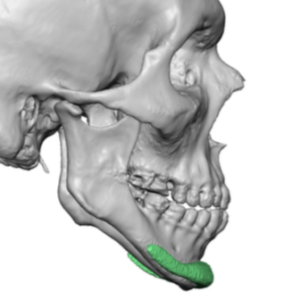

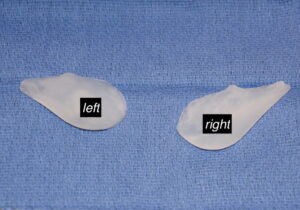
Some chin implant patient will eventually ‘graduate’ to jaw angle implants for a complete jawline augmentation effect. For some the placement of a chin implant reveals the deficiency of the rest of the jawline behind it. One can either place standard/custom jaw angle implants or move to a total wrap around custom jawline implant as a replacement for the chin implant. Which approach is best depends on one’s current satisfaction with their chin implant results as well as the magnitude/dimensions of the jaw angle deficiency.
Case Highlights:
1) After getting a chin implant some patients may desire jaw angle implants for a complete jawline effect.
2) When bony jaw angle asymmetry exists a custom jaw angle implant approach is usually best.
3) In creating custom jaw angle implants their anterior ends can be designed to meet up perfectly with the back end of the existing chin implant for a smooth jawline connection.
Dr. Barry Eppley
Indianapolis, Indiana




